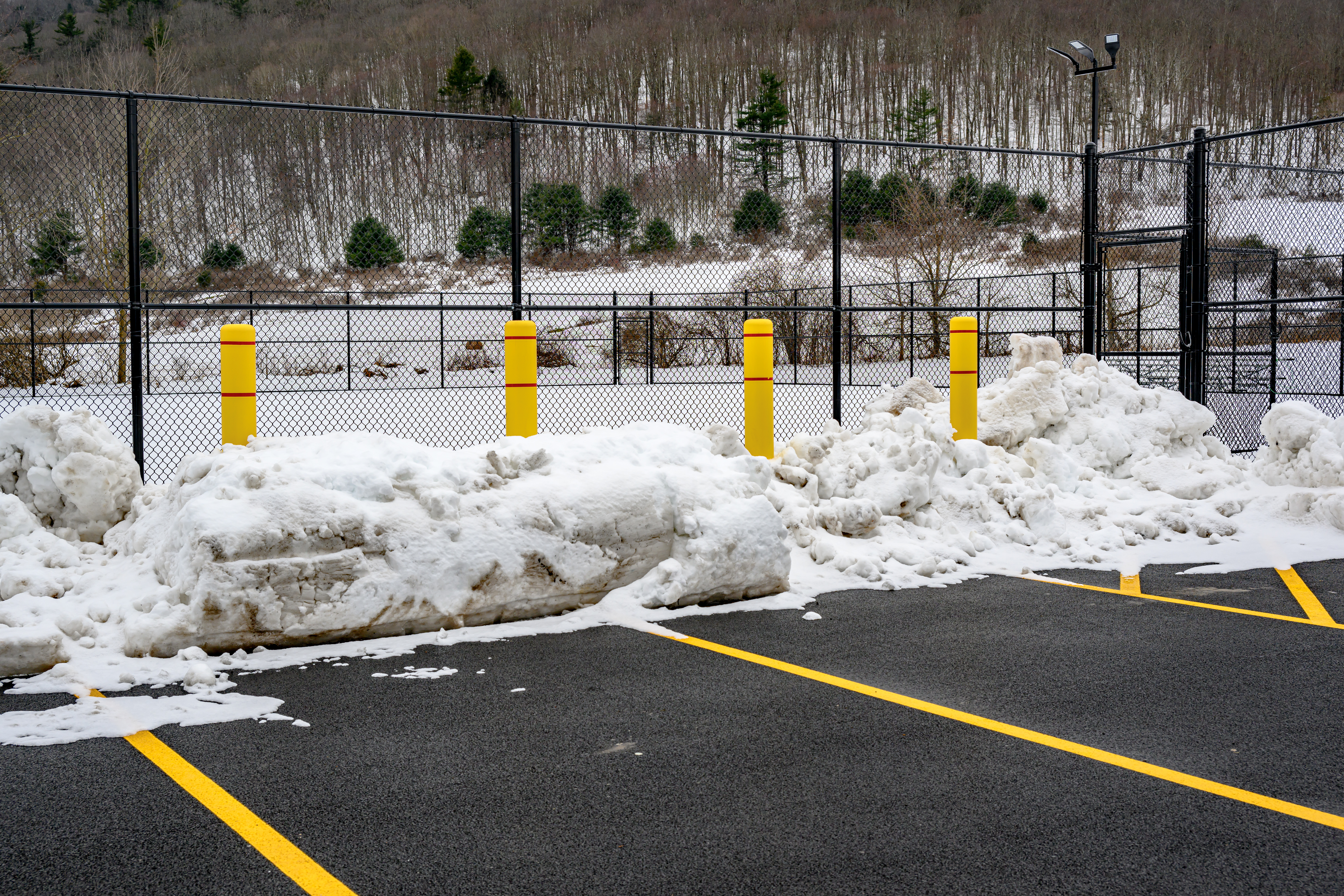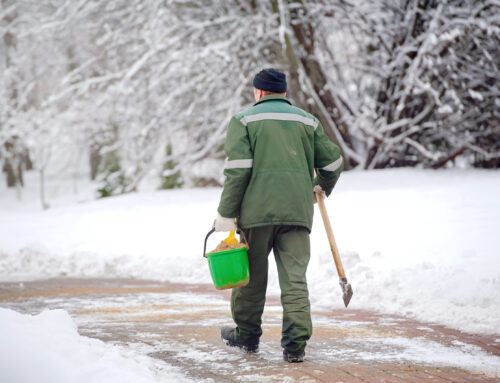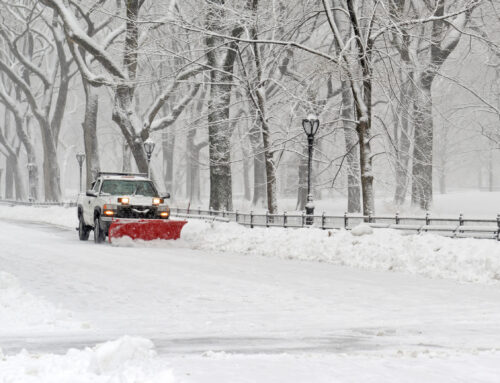Why a Clear Snow Plan Matters for Townhomes and HOAs
A reliable HOA snow removal plan protects residents, prevents accidents, and keeps your community running during winter weather. For townhome and condo associations in Wisconsin, an organized strategy also controls costs and reduces liability. Clear roads, sidewalks, and entries are essential for emergency access, deliveries, school pickups, and daily routines. Without a defined plan, you risk delays, complaints, and unnecessary damage to asphalt, curbs, and landscaping.
The Doctors of Landscaping is a local partner you can count on for detailed, dependable snow service. Based in Kenosha, Wisconsin, our team brings more than 30 years of experience caring for residential and small commercial properties. We pair practical know-how with clear communication, so boards and property managers always know what is included, when service will occur, and how pricing works. If you manage a townhome or HOA, now is the time to prepare for winter, compare options, and right-size your snow plan.

What Is Included in an HOA Snow Removal Plan
Core Service Areas
An effective HOA snow removal plan clearly defines every area that will be serviced and in what order. Typical coverage includes:
- Private roads, drive lanes, alleys, and cul-de-sacs inside the community
- Parking lots, guest spaces, and overflow areas
- Townhome driveways and garage aprons if included in the contract
- Sidewalks, connecting pathways, and stairs
- Main entrances, vestibules, and mail kiosks
- Trash and recycling enclosures for safe access
- Fire hydrants, bus stops, and ADA ramps
- Clubhouse entries, fitness center walkways, and common amenities
With the Doctors of Landscaping, each property receives a site map that marks the exact coverage areas, priority routes, and sensitive zones that require handwork or special equipment. That clarity reduces confusion during storms and ensures crews follow the same expectations all season.
Trigger Depth and Service Windows
Trigger depth is the snowfall level that activates plowing and sidewalk clearing. Common triggers are 1 inch, 1.5 inches, or 2 inches, but your association can customize to match resident expectations and budget. Service windows specify when crews will arrive and whether you prefer continuous push routes during a storm or one final cleanup after the snow ends.
Common options include:
- Continuous operations for storms lasting several hours
- End-of-storm cleanup within a set number of hours after snowfall stops
- Overnight plowing to deliver clear roads by early morning
- Daytime return visits to address windrows, drifting, and refreeze
In Kenosha, refreeze is a real concern because temperatures often drop overnight. The Doctors of Landscaping sets route schedules to balance speed with safety, and we include return visits when weather conditions require additional deicing.
Pretreatment and Deicing
Pretreatment reduces bonding between snow and pavement, which speeds plowing and lowers salt use. Liquid brine is applied before a storm when pavement temperatures and forecasts allow. During and after the event, salt or treated salt is used on roads and lots, while sidewalks receive a calcium or blended product that works at lower temperatures and is safer for concrete and pets.
We calibrate all spreaders and track application rates by site. That level of control helps your HOA manage costs and supports a safe, consistent surface with fewer icy patches. If your community requests low-chloride or eco-friendly options, doctors of landscaping can recommend a plan that balances performance and environmental impact.
Equipment and Crew Setup
The best results come from matching equipment to your site. Narrow townhome lanes and tight cul-de-sacs need different tools than large parking courts. Our fleet includes plow trucks, compact tractors, skid steers with pushers, UTVs for sidewalks, and commercial snow blowers for stairs and tight walkways. Crews are assigned to dedicated routes so they know your property layout, and backup units are on call for heavy events or breakdowns. GPS time stamps and weather monitoring support accurate documentation and accountability.
Snow Stacking and Hauling
Snow pile placement is one of the most overlooked parts of HOA snow removal. Poorly placed piles can block sight lines, melt across sidewalks, and crush turf. A good plan marks designated stacking areas that do not obstruct traffic or drainage. For sites with limited space or high snow totals, hauling may be necessary after piles reach a set height or when emergency access is restricted. The Doctors of Landscaping offers loader and hauling services with clear per-load pricing and predetermined thresholds, so managers can authorize work quickly when needed.
Ice Storm and Drifting Response
Wisconsin winters bring more than just powder. Freezing rain, lake-effect bursts, and strong winds can create glare ice and drifting. Your contract should describe how crews respond to ice storms, bridges and hills that refreeze, and areas prone to drifting. Many associations include patrol visits on the day after a storm to treat shaded zones, high-traffic intersections, and slopes. Our team watches pavement temperatures and forecast models to time deicing so it is effective and efficient.
Documentation and Communication
Good documentation protects residents and your association. Each visit should include a service log with times in and out, snowfall conditions, and materials used. Photos add another layer of proof. Communication is just as important. Property managers should receive storm updates, and residents should know where to park and when clearing will occur. The Doctors of Landscaping provides simple communication templates and a dedicated point of contact so everyone stays informed.
Damage Prevention and Spring Repair
Preseason property marking reduces damage to curbs, turf edges, drains, and landscape beds. We flag hydrants, utilities, and fragile features before the first storm. If minor turf or bed damage occurs, it is noted during the season and repaired in spring. The Doctors of Landscaping offers complete spring touch-ups, including lawn repair, edging, and clean-up, so your property looks its best after winter.
How HOA Snow Removal Pricing Works
Pricing reflects the size and complexity of the site, service level, snowfall averages, and the materials and equipment required. Transparent pricing helps boards compare bids fairly and choose the plan that fits both safety goals and budget. Doctors of landscaping prepares options with clear inclusions, so you know exactly what you are paying for and what is available as an add-on.
Common Pricing Models
- Per push pricing. You pay each time the property is plowed or shoveled after the trigger is met. Ideal for associations that want to pay based on usage and have flexible seasonal budgets.
- Seasonal flat-rate pricing. One fixed price covers a set scope for the entire winter. Great for predictable budgeting and consistent service levels across the season.
- Per event tiered pricing. Rates vary by storm size. A 1 to 3 inch snow has one price, a 3 to 6 inch event has another, and so on. Works well when snowfall varies but you want cost tied to storm intensity.
- Hourly plus materials. Crews bill for time on site, and salt or deicer is billed per application or by ton. Often used for complex properties or when needs change storm to storm.
- Hybrid models. Combine a base seasonal fee for readiness, with per push or per event charges above a cap. This protects both the HOA and the contractor during unusually heavy or light winters.
- Cap and collar. Seasonal pricing with a defined floor and ceiling that adjusts a portion of the cost if snowfall is far below or above average. Helps keep rates fair in unpredictable seasons.
What Drives the Price Up or Down
- Sidewalk length and stairs that require handwork or snow blowing
- Tight cul-de-sacs, islands, speed bumps, and obstacles that slow plowing
- On-street parking that limits access and requires return visits
- Short driveways and garage aprons included in the scope
- Low trigger depths and zero-tolerance expectations for ice
- Premium deicers, pretreatment, and frequent patrols for refreeze
- Snow hauling needs when stacking space is limited
- Distance to salt depots and disposal sites
- Historic snowfall, drifting exposure, and microclimates near the lake
- Documentation requirements and insurance limits
Example Scenarios
Consider three common scenarios. A budget-focused plan with a 2 inch trigger, no pretreatment, and limited sidewalk service will have a lower seasonal rate, but roads and walks may remain snow covered longer during active storms. A balanced plan with a 2 inch trigger, sidewalk service, and deicing for roads and walks provides reliable mobility at a moderate cost. A premium plan with a 1 inch trigger, pretreatment, frequent patrols, and detailed documentation delivers near bare-pavement conditions, which is ideal for high-traffic communities and associations with strict safety standards. The difference in cost is driven by crew hours, equipment allocation, and material usage. The right choice depends on your goals and risk tolerance.
Budgeting Tips for Boards
- Define apples-to-apples scopes when requesting bids, including maps and trigger depths
- Specify deicer types for roads and sidewalks, plus any restrictions
- List priority areas and any time windows, such as clear by 6 a.m.
- Identify pile locations and set a hauling threshold before winter
- Plan for refreeze patrols after storms and on cold mornings
- Confirm documentation needs for insurance and risk management
- Ask for a hybrid or cap-and-collar model if budgeting is tight
- Review parking rules that affect plow access in drive lanes
- Include spring repairs in the seasonal agreement if possible
Service Levels to Consider
Essential
This plan focuses on safe travel lanes at a lower price point. A common setup uses a 2 inch trigger, end-of-storm clearance, and road salt service. Sidewalks are either included after roads or serviced by the association. Expect basic documentation and limited return visits unless conditions require additional work.
Standard
Standard is the most popular for townhomes and HOAs. It usually includes a 2 inch trigger, route passes during longer storms, sidewalk clearing with blended deicer, and a post-storm check for drifting or refreeze. Documentation is provided with time stamps and material logs. Pile areas are managed to preserve visibility and drainage.
Premium or Zero-Tolerance
Premium service targets bare pavement as quickly as possible. Plans often use a 1 inch trigger, pretreatment before snow begins, continuous operations during the event, and frequent patrols for icy spots. Sidewalks receive low-temperature deicer, and stairs and entries are cleared multiple times per storm. This option is ideal for communities with high pedestrian traffic or steep grades.
How The Doctors of Landscaping Handles HOA Snow Removal
The Doctors of Landscaping is locally owned and operated, with more than 30 years serving Kenosha and nearby communities. What started as a small lawn maintenance business has grown into a full-service provider. We deliver lawn care, planting and bed work, hardscaping, seasonal cleanups, and reliable snow removal. Our year-round approach means one trusted partner handles your property with consistent standards and attentive service.
When you work with doctors of landscaping, you get a dedicated contact, a detailed site plan, and service that is both efficient and careful. We emphasize safety, proper equipment setup, and thorough documentation. Crews are trained to protect turf and curbs, maintain ADA access, and keep fire lanes and hydrants clear. We carry appropriate insurance and provide certificates upon request.
Our Process
- Site walk and assessment. We review your layout, traffic patterns, and hazards, then discuss goals and budget.
- Plan and map creation. We design routes, mark priority areas, and choose pile locations that preserve visibility and drainage.
- Proposal with options. You receive clear pricing for multiple service levels and any add-ons such as hauling, roof raking, or ice patrols.
- Preseason meeting and staking. We install markers at curbs, islands, drains, hydrants, and edges, then finalize the communication plan.
- Storm monitoring and dispatch. We track forecasts and pavement temperatures, dispatch crews, and adjust routes for conditions.
- Post-storm quality check. Supervisors verify that roads, walks, and entries meet the agreed standard and schedule any return visits.
- Season-end review and repairs. We document any winter wear and complete spring touch-ups, including lawn repairs and clean-up.
Materials We Use
We match materials to conditions to minimize waste and maximize traction. On roads and parking lots we apply rock salt or treated salt. For sidewalks and stairs we use calcium chloride or blended products that perform in colder temperatures and are friendlier to concrete and plantings. Liquid brine is used for pretreatment when appropriate. Spreaders are calibrated and application rates are recorded for every site, which supports accountability and budget control.
Safety and Compliance
Safety is built into our training and workflow. Crews wear proper PPE, use reflective markers for visibility, and follow pre-trip inspections. We prioritize ADA ramps, crosswalks, and mailbox access so residents can move safely throughout the property. Service logs and photos provide documentation for risk management. If your insurance carrier needs specific reporting, doctors of landscaping can tailor our logs to match.
Checklist for HOA Boards and Property Managers
- Define every service area and list priorities by order of operation
- Choose trigger depth and service windows for roads and sidewalks
- Confirm deicer types and application rates
- Decide on pretreatment policy for storms over a certain size
- Mark pile locations and create a snow hauling threshold
- List stairs, porches, and handwork-only zones
- Flag utilities, drains, and fragile landscape features
- Set resident parking rules during storms to allow plow access
- Establish a communication plan for managers and residents
- Request certificates of insurance and coverage limits
- Review equipment types and backup plans
- Clarify damage repair responsibilities and spring remediation
- Outline documentation expectations and response times
- Pick a pricing model and payment terms that fit your budget
- Schedule a preseason walkthrough and staking date
Frequently Asked Questions
How fast will our property be cleared?
Response times depend on your chosen service level, storm duration, and snowfall intensity. Essential plans focus on clearance after the storm ends. Standard and premium plans include route passes during the storm and faster turnaround for sidewalks and entries. We build routes to deliver consistent service windows and communicate updates during large events so you know what to expect.
Do you use sand or salt?
We primarily use salt and liquid brine for roads and lots because they provide reliable melting and less tracking than sand. On sidewalks and stairs we use calcium chloride or blends that perform at lower temperatures. Sand is available in special situations but can clog drains and requires more cleanup in spring. Our goal is to maintain traction while minimizing material usage through accurate calibration.
What happens if cars block drive lanes or visitor spots?
We will clear what is accessible and return later if your policy allows for a return visit. Many HOAs adopt storm parking rules to help plows reach all areas. The Doctors of Landscaping can provide resident notices and reminders so there are fewer obstructions and fewer return fees.
Can we change plans mid-season?
Yes, you can adjust service levels or add options like refreeze patrols or hauling, subject to route capacity. We will update pricing and scope in writing so expectations remain clear. Communication is the key to smooth changes.
What about roof snow and ice dams on townhomes?
Roof raking and ice dam mitigation can be added as a separate service. We focus on ground-level safety, ladder safety, and property protection. If roof work is needed, we schedule it promptly and coordinate with your board or manager.
How do you protect our landscaping and hardscapes?
We mark edges, drains, and bed lines before winter. Crews use appropriate cutting edges and avoid pushing into plantings. Piles are placed to reduce turf damage and avoid flooding during melt. Any incidental damage is documented and addressed in spring by The Doctors of Landscaping, including lawn repair, edging, and bed clean-up.
Get Ready for Winter With The Doctors of Landscaping
For townhomes and HOAs in Kenosha, a clear, reliable plan is the difference between smooth winter operations and recurring headaches. The Doctors of Landscaping brings proven systems, trained crews, and the right equipment to handle every aspect of HOA snow removal. You get clean roads and sidewalks, careful pile placement, accurate documentation, and spring repairs from one trusted provider. Request your free estimate, compare service levels, and lock in your winter schedule now. Contact doctors of landscaping today to build a custom plan that matches your property, your budget, and your safety goals. Get a quote now and be ready before the first flake falls.






Leave A Comment